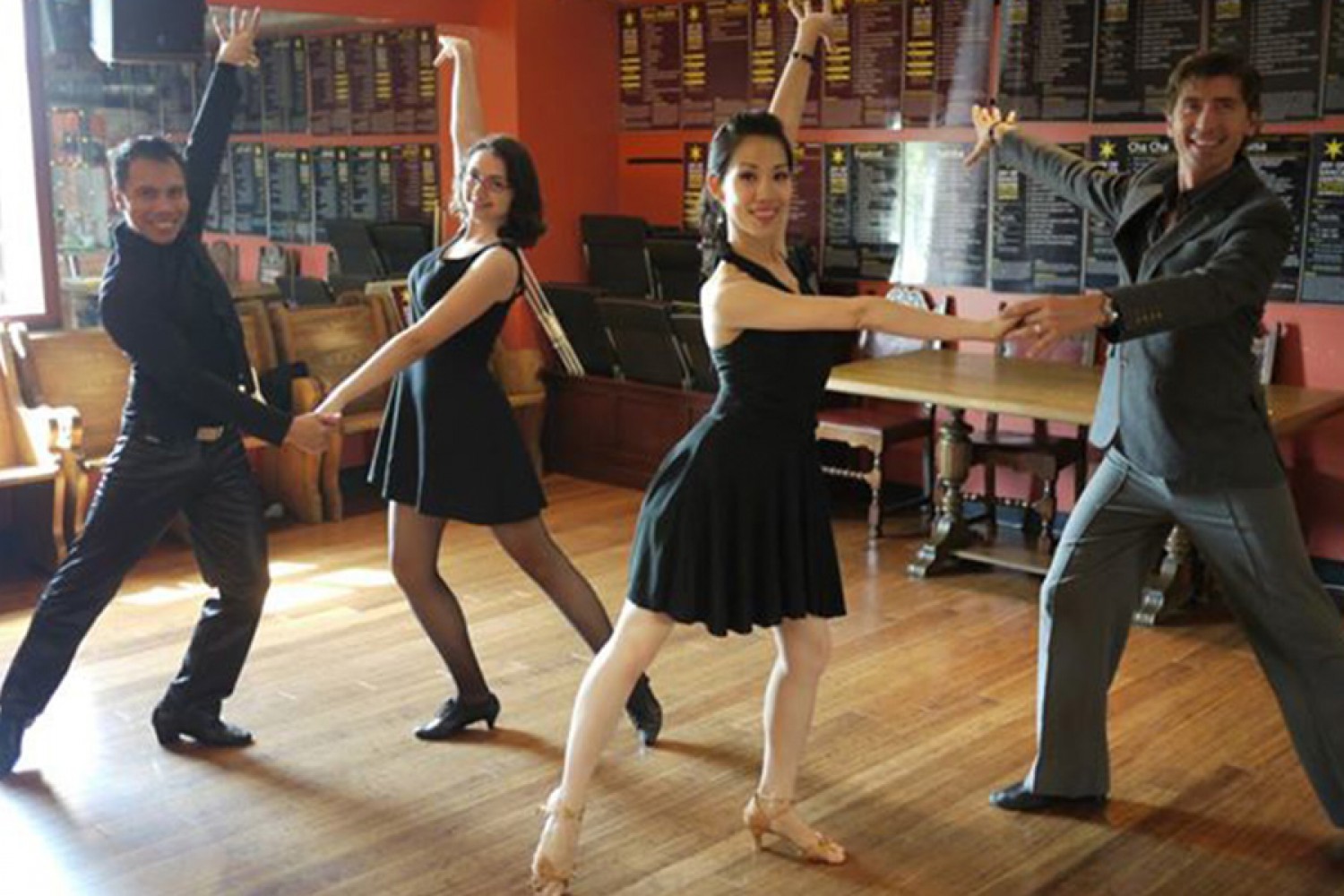The 4 Tiers of Ballroom Dancing: Dance Connection

Bottom line: If you aren’t communicating with your partner, you aren’t truly dancing with them. And that’s what a good dance connection – leading and following – is all about.
This doesn’t mean you haven’t been dancing as you improved on the first two tiers of footwork and timing. At those stages, simply dancing in sync with each other is enough. But only at this stage can you actually start feeling where your partner is moving, and this will transform your dancing completely.
When it comes to dance connection, I follow a simple formula:
Frame (arm and body alignment) + Pressure (towards your partner) = Connection
Knowing that, here’s how to take your dance connection to the next level.
1. Maintain your frame
Most leaders are used to thinking of their arms as being the “movers and shakers” of the world around us – we open doors with them, prepare our food, give car drivers the finger, etc. – But few of us stop to consider the role the body plays in these movements.
This is why most leaders start by pushing with their arms – they think that moving their partner should require some obvious action, when in fact it’s much more subtle. Our body is our secret weapon; “secret”, because when we lead from here, it doesn’t look like we’re doing anything at all.
Lecture aside, a good frame means good posture, combined with good arm alignment, in order to send your “message” to your follower as quickly and comfortably as possible. I’ll get more specific in future articles, but for now, you can find some good tips on this here.
2. I’m picking up good vibrations…
Most of us have heard the Five Pounds Rule when it comes to dance connection, but that still leaves plenty of room for confusion. We know that our partner will be easily surprised if the pressure is too light, or collapse their frame if it’s too heavy, but apart from that, exactly how much pressure do we need?
The answer is this: The minimum amount of pressure needed to guide or respond to a lead. This might increase if the pattern is unfamiliar, or decrease if either or both of you are more experienced, but the goal is to connect without an ounce of extra weight. You can spend your entire dancing life working on staying within this zone!
Of course, there are exceptions. Your partner increase the tension to protect themselves during a move that may injure them (read: dips), or subtly back-leading. In these cases, a tactful leader might ask if something about the move bothers them. When in doubt, treat these as warning signs and avoid doing the moves that caused them.
3. Consistency is key.
I remember teaching a couple where the follower kept back-leading at the same point, over and over. At first I asked her to wait longer for the leader, but it wasn’t until I let myself be guided through the same step that I realized the leader kept loosing the dance connection, forcing his partner to guess what would happen next.
Consistent connection depends on how well you know the previous two tiers – footwork and timing – of the step you are doing. When I asked the leader in the previous example what he was focusing on, he said “my footwork”. After a quick review, his dance connection became much more consistent and the back-leading stopped.
Treat any “disconnects” with your partner as indicators that one of you has not internalized the movement yet. As you shore up the cracks in your technique, you’ll find yourself able to lead and follow more and more consistently.
Next time we’ll look at the final tier, the “cherry on the top” of ballroom dancing: Styling!
About the Author
Ian Crewe has been dancing ballroom for over 18 years, and has a Licentiate in American smooth and rhythm. His passion for dance eventually led him to blogging and the World Wide Web. Ian currently teaches at the Joy of Dance Centre, Toronto, ON, Canada.

